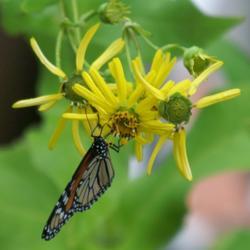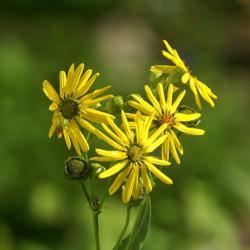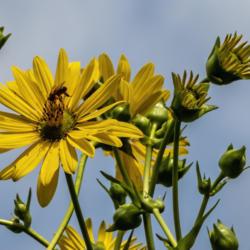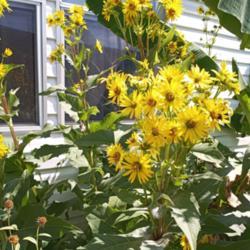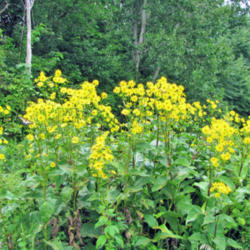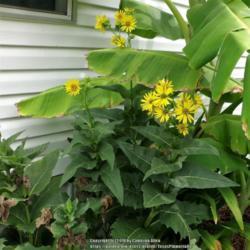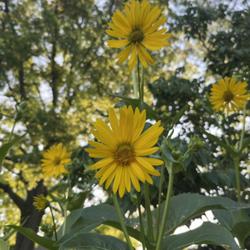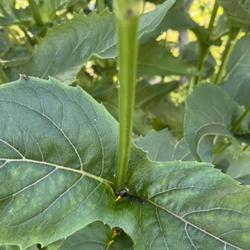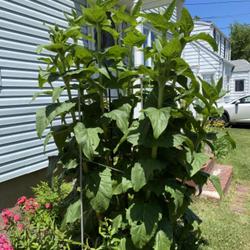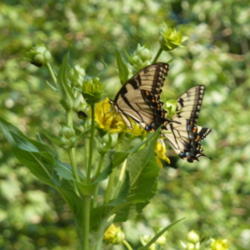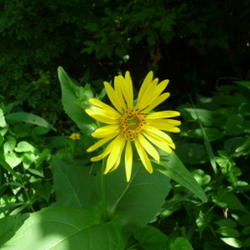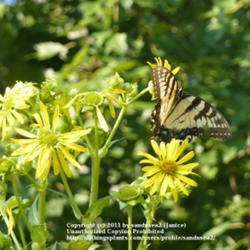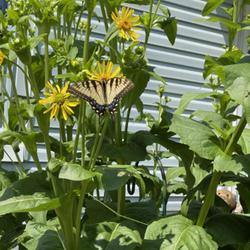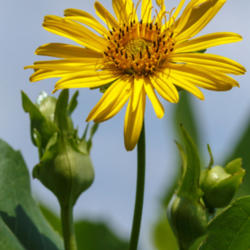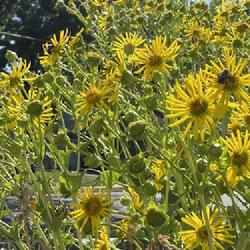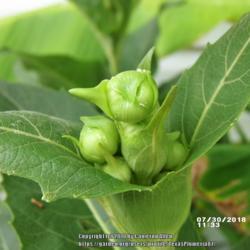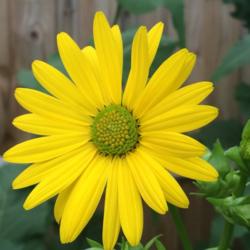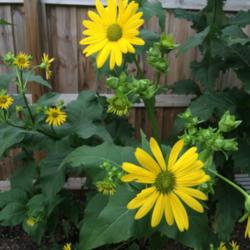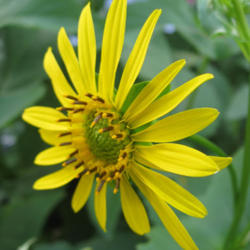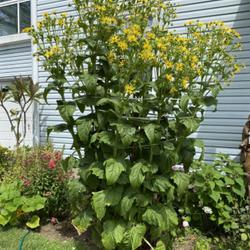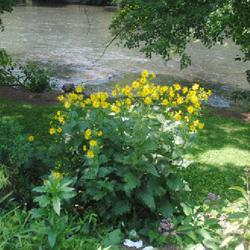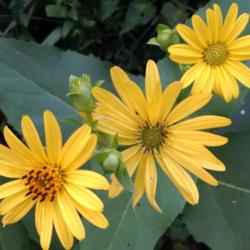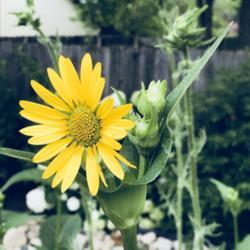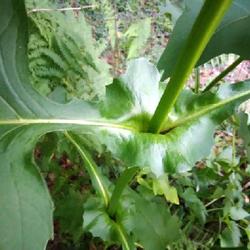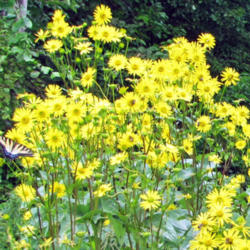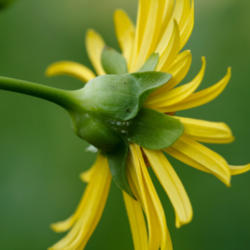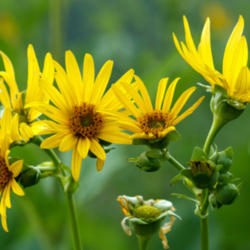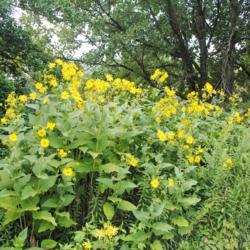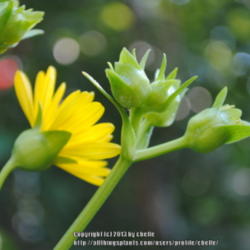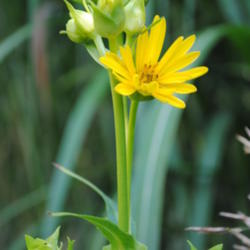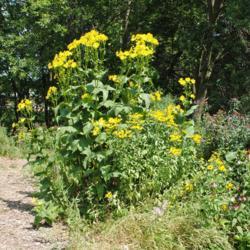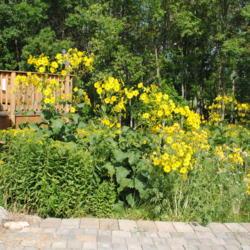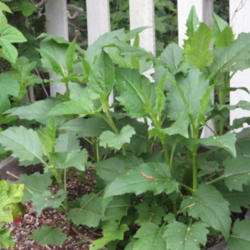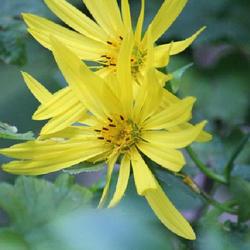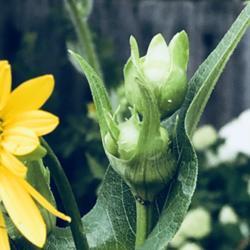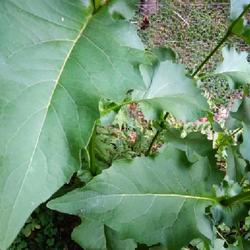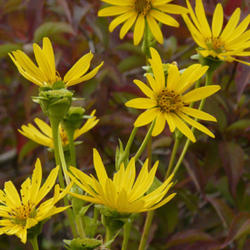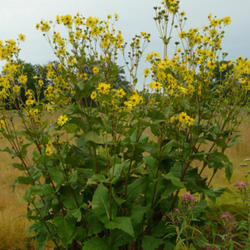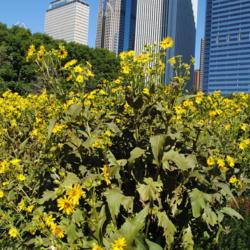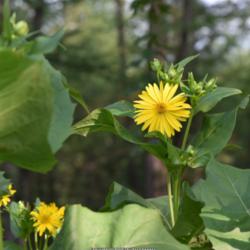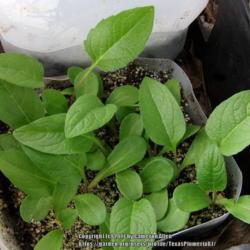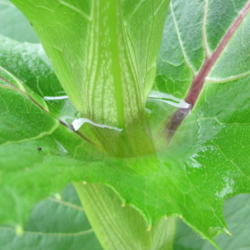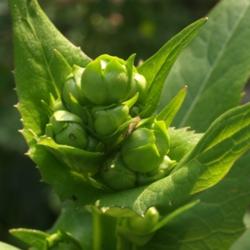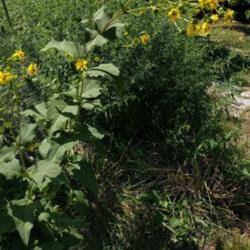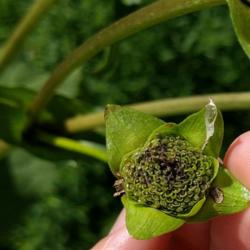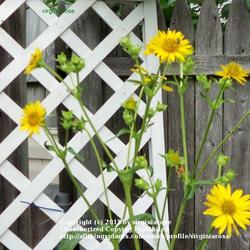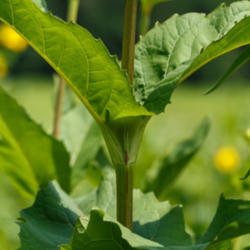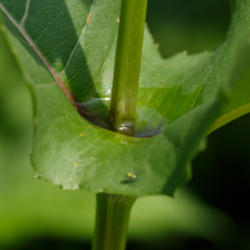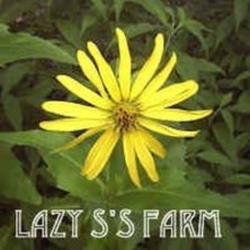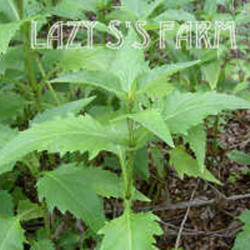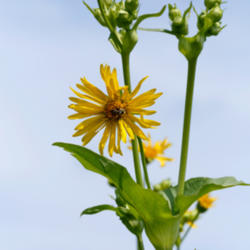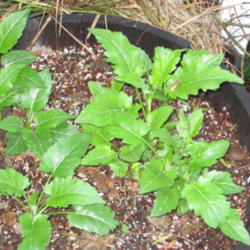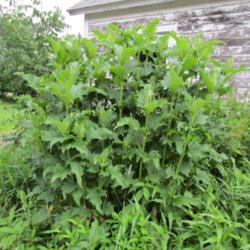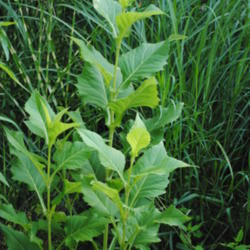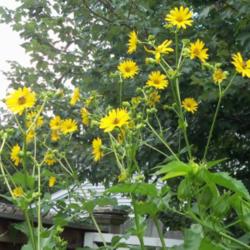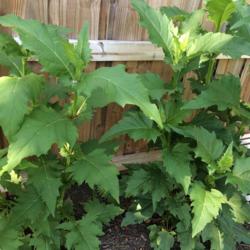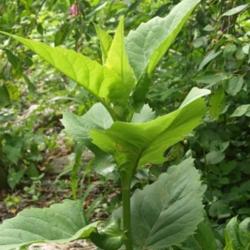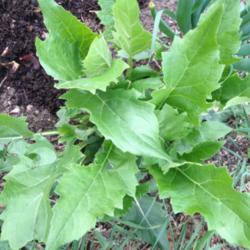Posted by
virginiarose (Virginia - Zone 8a) on Oct 5, 2011 6:47 PM concerning plant:
This plant is a lot better than a Sunflower because It doesn't need to be watered every day. I hardly ever water mine. This plant has seeds, which attract birds; nectar, pollen and water, which attract a lot of insects and butterflies; and the insects attract more birds!
Posted by
ILPARW (southeast Pennsylvania - Zone 6b) on Feb 17, 2018 9:07 PM concerning plant:
The prairie Cup-Plant gets its name from little "cups" formed by the leaves clasping at the stems that catch some water. Insects and birds take drinks from these "cups." It is a great pollinator plant for butterflies, moths, bees, and hummingbirds. Goldfinches love the seeds. Native plant nurseries sell this species for prairie restorations and naturalistic, native plant landscapes. It grows native from South Dakota and through much of southern Ontario and then southward into the deep South. I saw one large, innovative landscape company around Philadelphia use a few Cup-Plants in their landscapes as something one does not often see at all. This plant does not look good as just a single specimen and needs staking that way, and should be used in groups. Like other rosinweeds (Silphium), it forms a deep taproot.
Posted by
jmorth (central Illinois) on Dec 19, 2011 1:33 AM concerning plant:
A relatively common wildflower in the Heartland, found along stream borders, floodplains, low thickets, and RR right of ways.
Used as a smoke treatment (breathe in) for head colds, rheumatism, & nerve pains by Omaha and Ponca tribes. The resinous sap of the stem is chewed to prevent the upchuck.
The straight, square stem has earned designation 'Carpenter Weed'. A large and beneficial plant
Posted by
sandnsea2 (Cape Cod, MA, USA - Zone 7a) on Oct 2, 2011 8:06 AM concerning plant:
This plant has been the best butterfly attractant in my garden. Sometimes I have observed over 20 butterflies on the plant at once! Amazed me, as I did not grow it for this reason and did not remember reading about that attribute. It spreads, so give it room. A big boy. Zone 7A
Posted by
wcgypsy (Northern California) on Oct 3, 2011 8:31 AM concerning plant:
This plant is listed by Organic Gardening Magazine as one of the top ten 'Beneficial Border' plants. The joining of the opposing leaves at the stem form a 'cup', holding water from rain or dew, providing water for drinking for various insects and birds.
Prairie Nursery says that it is the single best species for attracting birds...providing food, water and cover.
Posted by
Catmint20906 (PNW WA half hour south of Olympia - Zone 8a) on Aug 27, 2014 9:56 AM concerning plant:
Cup Plant (Silphium perfoliatum) produces yellow, sunflower-like blossoms in late summer to early fall. A native to central and eastern North America, it has high wildlife value. It is a nectar source for butterflies and has special value to native, bumble, & honey bees. It also provides nesting materials and structure for native bees, particularly attracting greensweat, longhorned, bumble, mining, and leafcutter bees. Cup Plant also supports conservation biological control by attracting beneficial insects to the garden, such as ladybugs and lacewings. Its large, cup-like leaves provide birds and insects with drinking water, and finches and sparrows enjoy the seeds. In addition, it has high value for farm animals due to high protein content and plant longevity. Cup Plant spreads by rhizomes to form colonies in the wild.
